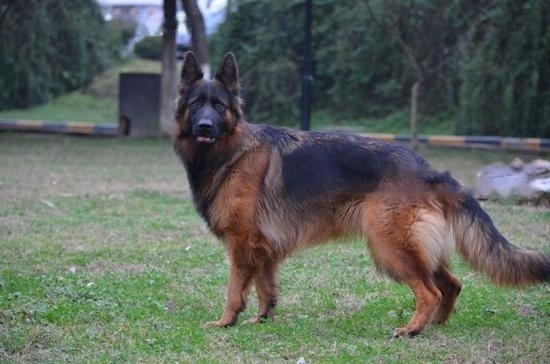Herding dogs learn herding techniques primarily by imitation. Therefore, in order to train a good herding dog, you must first choose a good puppy, and let it often follow other herding dogs to herd together. In addition to herding sheep and cattle, shepherd dogs can also be used to herd geese, ducks, chickens, etc. Currently, sheepdog competitions are often organized in the UK. During the competition, the shepherd must drive 10 sheep from a distance of 800 meters into a designated fence or road. The dog must concentrate, not bark, be skilled and spend a short time. If the dog spends a long time in the competition and bites or attacks the sheep that does not listen to the drive, it will be disqualified from the competition.

Suitable age: 8 months - 0 months
Training goal: according to the dog's There are a variety of training methods depending on the type and the requirements and forms of shepherding, but the basic requirement is to move every inch. Let the dog master the passwords in the training: stop, start, ''left', ''right', forward, return and so on.
Applicable dog breeds: Collie|Scottish Shepherd|German Shepherd|Border Collie
Site: Livestock Farm
Equipment: 4-meter leash | baton
Level: University (Professional) - Professional Skills Training
Training Period: 60 minutes * 40 times
The first step: Growing and grazing is a way for dogs to circle sheep and gather flocks ability. This ability of a dog is related to the breed and training level of the dog. For example, the Bird German Shepherd adopts a fairly broad, circular grazing, while the New Zealand Shepherd adopts a pear-shaped grazing. Younger dogs may especially like to graze on the side, which is allowed until the dog is fully proficient. When it has the ability to graze on one side, gather the flock, and drive the flock, it is necessary to cultivate the dog's ability to graze on both sides. At the beginning of herding training, the dog can be close to the sheep, and then gradually move away from the sheep for herding training. If it always grazes on the right, use a fence or fence to limit the right side of the flock, forcing the dog to graze and drive on the left or around the fence to the left. Training dogs for outside or larger range herding is extremely necessary, especially when the flock is far away or out of sight, which requires the dog to run directly to the flock , otherwise the sheep will be lost.
Second step: After the dog goes out to herd to gather a flock of sheep, the dog owner uses a whistle or the password go again to re-instruct the dog to leave and gather other sheep. sheep. It is required that even if there is no sheep target, as long as there is a direction indicated by the dog owner, it can go out to herd with a purpose. Re-breeding training must be done after the dog has responded well to the go back command. Use hand gestures and baton for collaborative training. At the beginning of the restocking training, the sheep must be seen in the direction the dog owner directs the dog to restock. Only when the dog is very familiar with and interested in re-herding, can it develop the skills of blind herding.
Step 3: It is more difficult to drive dogs with a strong desire to gather sheep to learn to drive sheep. It can be done by the following method, that is, on a narrow road or road that is well fenced, the road is crowded with sheep, and it is difficult for the dog to pass in front of the sheep. The dog owner and the dog drive behind the flock together, and use the left and right hands to command the dog, encourage the dog to drive forward, and consciously lag behind the dog, encouraging and praising it for completing the driving task alone. With the improvement of the dog's ability, the encouragement of the dog owner gradually decreases, and the distance behind it gradually increases until the dog can complete it independently. Occasionally, it can be brought back to the dog owner with the flock.
Step 4: The channeling skill is very useful for the Sheepdog, it is a modification of the interception skill. The key to training is to train the dog to act as the head sheep in the flock. It must be trained after mastering the passwords approach and backward. During the practice, the dog is far away from the front of the flock, waiting for the flock to approach. As the flock approaches, the dog owner can issue a backward password, instructing the dog to retreat a certain distance back, and then wait for the flock. approach, then repeat the process and stop any sheep from leaving suddenly. If the dog can't back up according to the command, you can use a large group of sheep to force it to back up, so that most dogs will eventually back away, and most of them are reluctant in the end, unlike dogs that surround the sheep It is easy to live. When the dog owner wants to urge the flock to move forward, he should call the dog to his side and lift the blockade on the front of the flock.
![[Dog Training 5] The training method of pet dog dining etiquette](/static/img/12192/12192_1.jpg)




